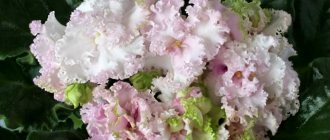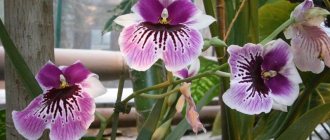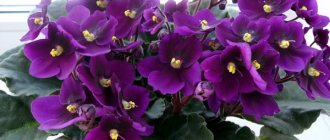The name evening primrose is probably heard only by advanced gardeners who are interested in floriculture and know what and how to plant. There are also those who tried to plant it on the advice of friends. Basically, many do not know this name or know the second name of this flower - night candle. This plant is not popular in our area, which is an omission, since with its properties and qualities, evening primrose is capable of striking the hearts of everyone who has ever decided to shelter it on their site.
Night sorceress (video)
Evening primrose Night candle is also called evening primrose
This flower is amazing because its time is night. As soon as the sun sets behind the horizon and the stars light up in the dark sky, evening primrose opens its beautiful buds. There are many of them, the whole bush is strewn with them. The spectacle is unforgettable. One has only to snatch these flowers with a flashlight in the darkness of the night, and they illuminate with their light everything that grows next to them. Indeed, like candles. Yes, so fragrant!
A little information about the heroine of the story. This messenger from America, where there are about 20 species, has shown itself well in our latitudes. It has creeping stems growing 30-90cm in height. By winter the shoots die off, and in the spring new ones appear. Night candle is a perennial and can live in one place for ten years. The beauty begins to bloom in June and continues to do so until the onset of frost. That is, almost all summer you can enjoy this fabulous charm on your site. Believe me, there is something to see here. Each flower reaches a diameter of about 10cm.
A pleasant feature of evening primrose is that each subsequent year it blooms even thicker and more actively than the previous year.
Garden evening primrose flower: photos and descriptions of species and varieties
Evening primrose (Oenothera) came to us from Europe and Central America; it belongs to the fireweed family (Onagraceae). The genus includes about 100 species of tall, low-growing annual, biennial and perennial herbaceous plants.
The name comes from the Greek words (oinos - wine) and (ther - wild beast). Previously, there was a belief that if a feral animal sniffs a plant sprinkled with wine (with evening primrose root), it will certainly become tame.
Evening primrose has several names, most of them (night candle and night primrose, evening star and evening flower, as well as summer star or yellow moonflower) because of its unusual feature - its fragrant flowers begin to open one after another at dusk. Looking at the flowering bushes, one gets the impression that they are completely entwined with a bright, shining garland. At dawn the flowers close. The name Oslinnik was most likely given due to the similarity of the foliage to donkey ears.
Description
Depending on the type, the stems of evening primrose can be erect or creeping from 20 cm to 2 meters in length. Simple, jagged, lobed or oval-elongated leaves are arranged in an alternate order. Stems and foliage are stiffly pubescent.
The color of the flowers can be bright yellow, white, reddish, pink or even blue. Typically, flowering begins at night or in cloudy weather, however, there are species that bloom throughout the day.
Each flower opens once, then a fruit-box ripens at the base of the rosette; each of them contains about 3 thousand very small seeds. The fruits ripen and open towards the end of September; the seeds remain viable for up to 4 years.
Evening primrose grows quite quickly, creating dense bushes or cushions. An adult donkey tree has a lush openwork crown.
The most common types of evening primrose
First of all, we will pay attention to those species that can be planted in permanent flowerbeds that do not require changes, that is, perennials.
Evening primrose (O. missouriensis)
Low-growing (up to 40 cm in height), creeping species with lodging stems. Flowers are cup-shaped, up to 10 cm in diameter, golden yellow in color. With abundant flowering, you can catch a pleasant aroma with notes of citrus. The flowering period is quite long - from mid-June until the first frost. Quite dense foliage, oval to narrow-lanceolate.
Evening primrose (O. acaulis)
The leaves and growth habit of this rare species make it similar to hostas (in miniature), but only in the daytime; in the evening the plant is covered with rare, but incredibly beautiful yellow flowers. The lanceolate leaves are collected in a rosette, from which a flower emerges. Flowering lasts from the end of June to the first half of September. The stemless summer star is unpretentious and has enviable winter hardiness.
Evening primrose (O. fruticosa)
The most unpretentious type. Subshrub up to 120 cm in height with strong, branched stems, fragrant, yellow flowers up to 5 cm in diameter. Small oval-elongated foliage forms a dense crown. In summer the leaves are dark green, turning purple in autumn.
Evening primrose perennial or low (O. pumila or O. perennis)
A low-growing species with ascending stems up to 30 cm. The foliage is small, narrowly lanceolate. Bright yellow flowers (up to 1.5 cm) are located in a spike-shaped inflorescence. Blooms in May and June.
Evening primrose (O. tetragona)
A bushy, frost-resistant plant with erect stems reaching 70 cm in height. Blue-green oval-shaped foliage, yellow flowers in groups collected in corymbose inflorescences. Flowering period from June to early August. Varieties: Sonnenwende
with dark yellow flowers and green foliage,
Hohes Licht
- pale yellow flowers,
Fryverkeri
with red foliage, dark yellow flowers.
Now let's move on to common annuals and biennials.
Popular one- and two-year-olds
- Evening primrose (O. speciosa) during the year forms several flexible flowering shoots about 20–60 cm in height; together with oblong leaves they form an openwork cushion strewn with cupped white or pink flowers (5 cm in diameter). Blooms from July to mid-August. The species quickly degenerates, does not tolerate winter well, requires shelter or temporary transplantation into a container and overexposure in a warmer place. The following varieties are very expressive: Siskiyou, Evening Rose, Silk Kiss, Orchid Pink
.
- Evening primrose (O. biennis) is a common species and has tall (up to 2 m) erect stems. The foliage is lanceolate, about 20 cm long, and the flowers are large, lemon-yellow. Flowering period June-October. Many people like the variety Evening Dawn
, it reaches 90 cm in height, the flowers are golden with a red tint. In the northern regions, two-year-old aspen grows poorly. - evening primrose (O. odorata) - this species does well in shady areas of the garden, grows up to a meter in height, yellow flowers have a distinct and strong aroma and remain open throughout the day.
- evening primrose (O. pallida) – in cold climate zones it is grown as a seasonal annual, blooming from June to October with large (more than 5 cm in diameter) white-pink, fragrant flowers.
- Evening primrose (O. versicolor) is a tall biennial up to 1.5 m in height. The flowers are reddish-yellow. The most famous variety is Sunset Boulevard
with low reddish stems that form a compact bush up to 30 cm in diameter. Dark orange flowers open in late summer. This variety loves the sun and grows poorly. - Evening primrose Lamarckiana (O. lamarckiana) is a biennial plant with tall, branching, erect stems. The foliage is oval-lanceolate, the flowers are yellow.
- Evening primrose Drummond (O. drummondii) is an annual plant up to 80 cm high, with light green leaves and large flowers (up to 7 cm), blooms from June until the first frost. Low-growing varieties are found in cultivation.
Features of cultivation
The night queen evening primrose is a truly unpretentious plant that does well in a variety of soils and in almost any type of light, be it open sun or a shady place. Another advantage of evening primrose is that it is resistant to various diseases and is not attacked by pests.
Evening primrose will look great together with lobelia, lisianthus or petunia
Evening primrose begins its life on the site from seeds. If your site is located in the southern region, the seeds can be planted directly in open ground. It is possible that everything will grow together in cooler latitudes. However, in this case, it is safer to purchase healthy seedlings or ask those who grow them. It is enough to separate small bushes from the mother bush around which they grow or divide the mother bush itself in May or late summer.
With timely planting and successful cultivation, evening primrose will produce seeds in August-September, providing you with planting material for the next year.
You can also grow evening primrose through seedlings. But in this case, given the growth rate of the plant, the seeds need to be planted in mini-greenhouses already in February. Then in May the evening primrose can be planted in open ground. With this growing method, if the care rules are followed, evening primrose can bloom in the first year.
Evening primrose tolerates our winters well. Before the onset of cold weather, you need to cut off all the stems almost to the base and let Mother Nature cover the remaining underground parts of the plant with snow. You don't need to do anything else.
Evening primrose roots overwinter well even in the absence of shelter
Home care
Eastern and western windows are suitable for placing pachistachis. However, it needs to be shaded from direct sunlight, because in a tropical forest the sun breaks through the foliage of tall trees in portions, and does not fall with all its force on the flower.
Which pot to choose
For the first place of residence of the plant, take a pot with a diameter of 12 cm. Experienced gardeners advise planting 2-3 cuttings in such a small pot, and then the plant will bloom luxuriantly. The depth of the pot should also be small. Ideally, there is no or little difference between diameter and depth. In the first years of transplantation, the capacity is increased by 1–2 cm.
Important! The size of the pot may answer the question of why pachystachys does not bloom. In a container that is clearly too large for it, the plant does not produce flower stalks.
Temperature
In winter, despite the relative period of rest, it is important to keep the plant long daylight hours. The temperature regime for spring and summer is 23...25 °C. Starting from mid-autumn and all winter, the flower feels great at 16...18 °C.
Watering and humidity
High humidity and constantly wet soil are the conditions for the successful development and flowering of the plant. In spring and summer, the flower needs to be watered every day; in winter, reduce the frequency of watering, but make sure that the soil does not dry out too much. Stagnant water is also bad for the plant.
Top dressing
Caring for pastachis at home involves the application of fertilizers. Pachistachis is fed during the period of active growth 2 times a month with complex mineral fertilizer, which is applied in the form of a solution to a pre-moistened substrate. You can fertilize pachistachis with organic matter, for example, a solution of mullein or chicken manure, which is sold in specialized stores in ready-to-use form. If pachistachis does not rest in winter, feed it with a mineral complex once every 1-1.5 months.
Transplanting into a new pot
Young pachistachis are replanted annually in the spring, before flowering begins. For adult plants, the pot should be changed no more than once every three years. For pachistachis, you need an earthen mixture of equal parts of peat, leaf soil, humus, turf soil and coarse river sand.
The soil should be disinfected two weeks before replanting by heating it in the oven or spilling it with a strong solution of potassium permanganate. You must first lay a layer of drainage material at the bottom of the new pot, and the flower should be trimmed before replanting.
Pachistachis prepared for transplantation is transferred from the old pot to a new one, after which the voids are filled with soil mixture, the substrate is compacted and watered. The plant should be protected from the sun for several days after transplantation.
Trimming
The flower is trimmed regularly, otherwise it will become unattractive due to the shoots exposed at the bottom. When and how to prune pachistachis? At the end of the dormant period, the shoots of the plant are cut off, leaving only 10-15 cm. The cuttings can be used as cuttings for propagation.
When and how it blooms - photo
Pachistachis blooms from February to October. You can, of course, make it bloom in winter, but this will require additional lighting. The funny spikes of Pachistachys resemble the inflorescences of Aphelandra, which is not surprising, only in Pachistachys they are more elongated. The inflorescences are attracted by yellow bracts that do not fade for several weeks. And the flowers themselves - spongy, light, almost white - fall off very quickly, after 3-4 days.
Problems with flowering can only occur if the plant does not have enough light. Old, elongated and bald pachistachys in the lower part of the shoots form a small number of inflorescences, and flowers form only on young shoots, so if you want to get more inflorescences, force the plant to branch.
Pachistachis begins flowering at an early age: in some cases, cuttings bloomed within a couple of months after rooting. New ones branch off from wilted pachystachys inflorescences, so flowering can last quite a long time. Still, it is advisable to remove faded spikelets for preventive and hygienic purposes.
Evening primrose care
As mentioned above, evening primrose is very unpretentious to the type of soil and lighting. Of course, she will show her best qualities in the sun. The flower is not demanding on moisture. The main thing here is not to go to extremes. In dry weather, when the soil around the roots becomes completely dry, you cannot do without watering, but you cannot overwater the plant, much less plant it where groundwater is close to the surface. Evening primrose will not tolerate stagnant moisture. Therefore, ensure good drainage and you won’t have to worry about anything.
Of course, weeding the land is also necessary. Without weeds, things will go much better for the night candle, and the loose, oxygen-rich soil has never bothered anyone.
Growing problems and diseases
All the problems that can be encountered when growing pachistachis are associated with improperly organized care. For example, it’s easy to answer why Pachistachis leaves curl: the air humidity is clearly low.
There are other difficulties:
- Leaves fall. Most often, this is a plant’s reaction to drafts or poor watering. By eliminating one of these negative factors, leaf loss can be stopped.
- Exposure of the lower part of the trunk. Loss of decorativeness can be corrected by pruning the plant.
- With a lack of light , the shoots become very elongated and the leaves become small . Trim the elongated stems and move the flower to the right place with good lighting.
- The tips of the leaves dry out - infrequent watering, dry air in the room or lack of nutrients.
- The bush is stretched and the leaves become smaller - poor lighting.
- The lower part of the trunk was exposed - lack of annual pruning.
- Inflorescences rot and fall off due to droplets of water falling on them during spraying or insufficient ventilation.
- The leaves turn yellow and fall off - the earthen clod is drying out, there is a lack of light, low humidity or the presence of drafts.
- The lower leaves wither and fall off - lack of moisture in the soil or low temperature in the room.
- The color of the leaves fades - the plant needs feeding.
This tropical guest has amazing resistance to various diseases. If you care for it properly, it will remain healthy and blooming for a long time.
Why do pachystachys leaves curl?
main reason
Why
does pachistachis
curl
its leaves
? - failure to follow the correct watering regime. The decorative flower is a rather moisture-loving plant. Lack of watering and spraying, especially in the summer, leads to the curling of the leaves, because this is how the plant tries to reduce the area of evaporation.
Sometimes pachystachys leaves turn pale and wither
This problem has three causes: poor watering, lack of nutrients and lack of light. It is possible to identify what exactly leads to such a reaction only experimentally, one by one correcting the rules of care.
From extreme heat, the leaves begin to turn yellow and dry out at the ends.
In such weather, the plant needs to be shaded or moved to a cooler room. When the temperature drops below +14 °C, the flower dies.
Why doesn't pachistachis bloom?
The absence of “golden candles” on pastachis is most often explained by:
Low indoor humidity or sudden temperature changes that have a detrimental effect on the plant. It is necessary to protect it from drafts and increase humidity by spraying the bush in the mornings and evenings.
Pachistachis may be “late” to flower due to transplantation into a pot that is too large. In this case, he will first fill the entire volume of the pot with roots and only then will delight the gardener with the long-awaited flowers.
Use in landscape design
Evening primrose is incredibly decorative and looks good both planted alone and in company with other plantings in the form of a climbing rose, stachys or physiostegia. It is enough to plant three to five plant bushes in order to obtain an extraordinary light and color effect.
Evening primrose flowers are a real garland that, in the rays of the sun or a flashlight, can create a stunning play of light. If you plant marigolds, petunia, lisianthus or mirabilis next to it, the effect will be greatly enhanced.
Photo gallery of evening primrose in landscape design
Evening primrose can be used as a plant for the middle and back row
She perfectly decorates a tall flower garden
And it looks just as good when planted alone.
Signs and superstitions
It would be useful to recall that various signs and superstitions are associated with pachistachis:
- If the flowers of a healthy flowering plant suddenly begin to dry out and fall off, it is believed that this is how it warns the owners of imminent bad news.
- The bright color of the flowers, on the contrary, foreshadows good news.
- Pachistachis recently brought into the house can intensify the passion between spouses. It has a positive effect on family relationships and creates a positive atmosphere in the home.
- It has been noticed that near this plant choleric people become calm, peaceful, and complacent.
Pachistachis is credited with magical properties: it fills the house with vitality, has a beneficial effect on the human nervous system, that is, it has a calming effect on hyperactive people and at the same time activates passive household members. The yellow color of the bracts of pachystachys leaves has a positive effect on the relationship between spouses, helping to smooth out conflicts and develop compromise solutions.
Some signs are also associated with pastachis. For example, if, with normal care, the plant’s inflorescences suddenly begin to fall off and the leaves dry out, this portends troubles with or among relatives. But the unexpectedly bright color of the bract leaves is a sign of an approaching pleasant event. Pachistachis presented as a gift is a wish for happiness in your personal life, which, they say, always comes true.











